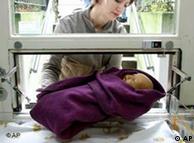A research study in Africa showed that circumcision for males can cut their risk of AIDS in half. At the time of the study, the New York Times reported:
The two trials were carried out among nearly 3,000 men in Kisumu, Kenya, and nearly 5,000 men in Rakai, Uganda. None were infected with H.I.V., the virus that causes AIDS; they were divided into circumcised and uncircumcised groups. They were given safe sex advice — although many presumably did not take it — and retested regularly.
The trials were stopped by the National Institutes of Health’s Data Safety and Monitoring Board this week after data showed that the Kenyan men had a 53 percent reduction in new H.I.V. cases and the Ugandan men a 48 percent reduction.
Today, we see the results of this study put into action to save lives. First, MPs in Zimbabwe underwent testing recently for HIV. Now, MPs in Zimbabwe are getting circumcised as part of a campaign to reduce HIV. About 120 officials expressed interest and a make-shift clinic was set up in Parliament House, Harare, to perform the procedure. By midday, four had had the surgery with more expected, including possibly President Robert Mugabe.
In Zimbabwe, more than a million people are HIV positive. Given the same scenario, I wonder how many other politicians in other countries - particularly in the West - would do the same. That is, would they support better health for their citizens by personally participating in a body altering procedure to promote health and reduce the spread of a deadly disease?
See the full article below or click here.
Blessing Chebundo, chairman of Zimbabwe Parliamentarians Against Aids, said his main objective was to inspire other citizens to follow suit. Research by the UN has suggested the risk of HIV infection is lower among men who have been circumcised. More than a million people in Zimbabwe are believed to be HIV-positive, with about 500,000 receiving anti-retroviral treatment.
Mr Chebundo said more than 120 MPs and parliamentary staff had shown an interest in the circumcision programme. The BBC's Brian Hungwe, in Harare says that by 12:00 local time (10:00GMT), four had had the procedure performed, with more expected later. There was a possibility that some members of the executive may also attend, including President Robert Mugabe, he added.
The circumcision programme had attracted a lot of attention in Zimbabwe, and had divided opinion, our correspondent said. The issue was raised in parliament in September 2011, when Deputy Prime Minister Thokozani Khupe made a plea to her fellow politicians. At the time, many MPs shunned the idea. As well as a clinic in parliament, the initiative has seen a tent set up across the road from parliament, where counselling sessions will be held.
The two trials were carried out among nearly 3,000 men in Kisumu, Kenya, and nearly 5,000 men in Rakai, Uganda. None were infected with H.I.V., the virus that causes AIDS; they were divided into circumcised and uncircumcised groups. They were given safe sex advice — although many presumably did not take it — and retested regularly.
The trials were stopped by the National Institutes of Health’s Data Safety and Monitoring Board this week after data showed that the Kenyan men had a 53 percent reduction in new H.I.V. cases and the Ugandan men a 48 percent reduction.
Today, we see the results of this study put into action to save lives. First, MPs in Zimbabwe underwent testing recently for HIV. Now, MPs in Zimbabwe are getting circumcised as part of a campaign to reduce HIV. About 120 officials expressed interest and a make-shift clinic was set up in Parliament House, Harare, to perform the procedure. By midday, four had had the surgery with more expected, including possibly President Robert Mugabe.
In Zimbabwe, more than a million people are HIV positive. Given the same scenario, I wonder how many other politicians in other countries - particularly in the West - would do the same. That is, would they support better health for their citizens by personally participating in a body altering procedure to promote health and reduce the spread of a deadly disease?
See the full article below or click here.
Zimbabwe's MPs to be circumcised in bid to fight HIV
A group of Zimbabwean MPs is getting circumcised as part of a campaign to reduce HIV and Aids cases. A small makeshift clinic for carrying out the procedures was erected in Parliament House in the capital Harare.Blessing Chebundo, chairman of Zimbabwe Parliamentarians Against Aids, said his main objective was to inspire other citizens to follow suit. Research by the UN has suggested the risk of HIV infection is lower among men who have been circumcised. More than a million people in Zimbabwe are believed to be HIV-positive, with about 500,000 receiving anti-retroviral treatment.
Mr Chebundo said more than 120 MPs and parliamentary staff had shown an interest in the circumcision programme. The BBC's Brian Hungwe, in Harare says that by 12:00 local time (10:00GMT), four had had the procedure performed, with more expected later. There was a possibility that some members of the executive may also attend, including President Robert Mugabe, he added.
The circumcision programme had attracted a lot of attention in Zimbabwe, and had divided opinion, our correspondent said. The issue was raised in parliament in September 2011, when Deputy Prime Minister Thokozani Khupe made a plea to her fellow politicians. At the time, many MPs shunned the idea. As well as a clinic in parliament, the initiative has seen a tent set up across the road from parliament, where counselling sessions will be held.


